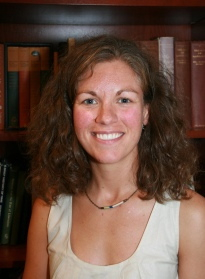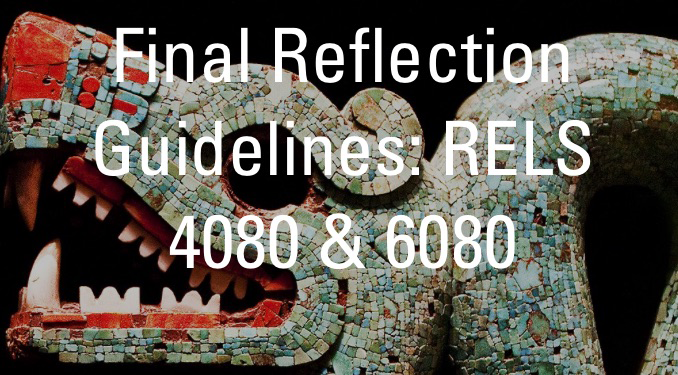
Writing the Final Reflection Assignment
In my first post, I described a new course-- “Religious Dimensions in Human Experience: Between Animals and Gods” -- and all of the teaching activities I have going on in it: there was planning and now teaching, writing this blog, and starting a long-term scholarship on teaching and learning project (SoTL). For the project, I’m keeping data on how writing for listeners affects students’ research and writing process. (A few weeks ago, I blogged about why I assigned podcasts as “writing.”)
When I started thinking about teaching “writing for listeners,” I realized I needed to find some resources for my students and me. I found a favorite: Transom.org. Transom’s organizers describe what they’re about like this:
Transom channels new work, voices, and ideas into public media through the Internet and workshops. Our goal is to be useful and inspiring. Transom is a performance space, an open editorial session, an audition stage, a library, and a hangout. Our purpose is to pass the baton of mission and good practice in public media through tools, philosophy, and technique.
I fell in love the moment I saw familiar names—Nancy Updike, Alex Chadwick, Jad Abumrad—writing about writing for radio. I had stumbled across an archive of essays written by the very people I’d like for my students to hear and emulate.
Updike’s two-part manifesto “Better Writing through Radio” was the first reading I assigned related to “writing for listeners,” and it is the model for my students’ final reflections. Given that they have been reading and listening to podcasts, as well as producing some, I want the final reflections to take into account all of our course materials—assigned readings and the students’ own creations—as texts.
As I explained in class last week (and on the assignment), students’ objective in this final reflection is  to interpret the “big picture” of our study of the religious dimensions of human experience, between animals and gods by drawing attention to its significant details. My goals in creating this assignment were to provide an opportunity for students to make sense of the whole course by using one of the approaches (critical terms, key passages) we have been practicing together. Rather than narrating their experience of the course, students will write an analysis that integrates assigned readings and two audio clips from our podcast archives. For their final reflections, students can choose one of two ways to focus their analysis (a critical term or a key passage) and one of two ways to present their essays (a PDF with audio or a Sway presentation).
to interpret the “big picture” of our study of the religious dimensions of human experience, between animals and gods by drawing attention to its significant details. My goals in creating this assignment were to provide an opportunity for students to make sense of the whole course by using one of the approaches (critical terms, key passages) we have been practicing together. Rather than narrating their experience of the course, students will write an analysis that integrates assigned readings and two audio clips from our podcast archives. For their final reflections, students can choose one of two ways to focus their analysis (a critical term or a key passage) and one of two ways to present their essays (a PDF with audio or a Sway presentation).
Last week I met with Sarah in Instructional Design to talk through how students would craft documents that include audio clips, and she introduced me to a few other platforms that can host text and audio. After reviewing a handful (Wordpress, Weebly, and Wix), I settled on Sway. PC Magazine describes Sway as “an example of a new class of software that lets you create ‘stories’ . . . [it gives] you a simple way to craft your words and images into a well-designed, easily and appealingly navigable presentation that can be viewed on the Web.” Sway bridges the gap between web-building platforms like Wordpress and presentation software like Powerpoint or Prezi. Take a look at the same assignment in Sway.
What new ways of “writing” have you tried lately? When are you willing to experiment with new writing technologies? When not?
This is the 8th post in this series by Molly Bassett this semester (Fall 2015).